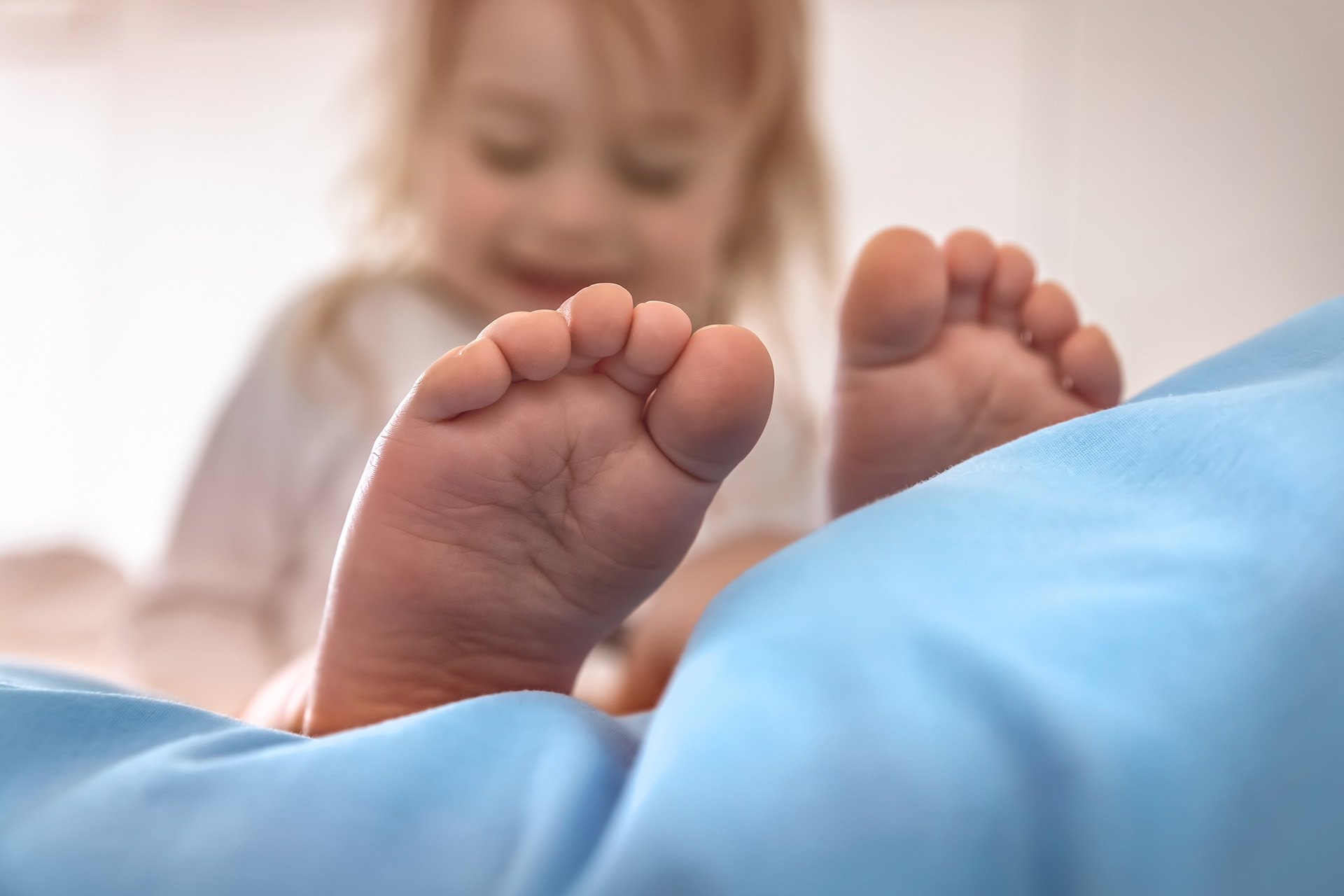Paediatric flat feet (otherwise referred to as pes planus) is a fairly common condition for children. A small portion of children with flat feet can develop gait problems and experience pain. [1] In most cases, flat feet in children are nothing to be concerned about. However, if you notice your child has slight difficulties running or walking or is experiencing foot pain or discomfort, it’s essential to talk to a paediatric podiatrist to evaluate any potential issues with your child’s feet.
Does Your Child Have Gait Problems Because of Flat Feet?
The human foot is designed to change shape as it grows. When children are born, their feet will have no arch. The arch will only start to develop at around 2-3 years of age. At 6 or 7 years old, that arch should become more fully formed as the muscles develop in the foot. [2]
It is hard to tell if a child standing has flat feet. The foot flattens when the child stands on it, creating the illusion of foot issues. This could be because the tendons that hold up the arch may not be tight enough yet to form the arch when standing or because the child’s foot has more fat, making it seem thicker than an adult’s.
Almost all children under the age of 6 have flexible flat feet. The arch takes time to develop, and treatment like children’s arch supports for flat feet may not be necessary. Most children will grow out of the foot condition and develop a normal arch, that allows for regular movement. A small number may not grow out of it, causing gait problems and discomfort when moving.
In one study, the feet of 3,217 healthy children aged 3 to 15 years were examined, with the researchers finding that it is normal for feet in childhood to be flat. [3] Their research also found that children’s flat feet tend to become less flat as they age. However, if your child has any of the following symptoms, it is worth checking with a podiatrist who specialises in children’s feet:
- Not walking by 18 months
- Experience foot discomfort
- Discrepancies between the right and left foot
When Should Parents Be Concerned About Flat Feet?
It is important to get an accurate diagnosis of flat feet as the condition varies from child to child. Unexpected difficulty in walking is not unusual in toddlers. If the issue persists over time, or if your child begins complaining about foot or ankle pain, it may be worth visiting your podiatrist. Flexible flat feet in toddlers are a normal part of your child’s development; pain is not.
High arch feet (the opposite of flat feet) are more unusual than flat feet and do not occur naturally in the child’s foot development. Children with high arch feet are the ones to watch!
If you suspect your child has a high arch and starts to develop discomfort, consult your paediatric podiatrist.
In some rare cases, flat feet may be an indication of a more serious condition, such as juvenile arthritis, some forms of muscular dystrophy, cerebral palsy, inherited disorders affecting the nervous system, and perhaps connective tissue disorders.

How Should Flat Feet Be Corrected in Children?
If your podiatrist determines that your child’s flat feet are causing problems, they may decide treatment is necessary. In most cases, treatment is quite simple for paediatric flat feet. Oftentimes, buying the right pair of shoes may be the only treatment required. There’s also a benefit for barefoot walking in toddlers who are just beginning to walk. If that isn’t enough, your podiatrist may recommend custom orthotics for children or shoe inserts to slip into your child’s shoe for additional support.

Your podiatrist may also provide you and your child with exercises to address flat feet, like muscle stretches, strengthening programmes, or specific physical activities like hopping, swimming, and balancing.
Conservative treatments are the best approach for paediatric flat feet, as the problem may likely be resolved over time. However, in some extreme cases, surgical intervention may be recommended.
Surgery should only be considered for children with flat feet who fail to respond to nonsurgical treatment. If it appears, there may be significant impairment for the child if it is left untreated. [4] Surgery aims to improve the alignment of the foot and ankle bones so they can work together as a team. The type of surgery will be determined by how severe the problem is, depending on where the issue stems from in the foot.
In this day and age of over-prescriptions, it is important not to administer unnecessary treatment to your child’s foot, especially if they could grow out of it naturally. Children with flat feet usually don’t require any treatment other than time. Some studies suggest that an overreliance on orthotics can hamper your child’s development, creating dependency issues. [5]
If you’re looking for recommendations on how to fix flat feet in a child, expert care tips for your toddler’s foot health, or concerns about your child’s feet, you can contact us at The Foot Practice. We will help you determine if there is a problem and provide the best course of treatment, if necessary, or assuage any fears you may have. We will help you assess if treatment is needed and, if so, provide you with safe treatment options that effectively cater to your child’s needs.
Paediatric Related Articles
Sources
[1] Evans AM, Rome K, Carroll M, Hawke F. Foot orthoses for treating pediatric flat feet. Cochrane Database of Systematic Reviews 2022, Issue 1. Art. No.: CD006311. DOI: 10.1002/14651858.CD006311.pub4. Accessed 11 April 2022.
[2] Dare, D. M., & Dodwell, E. R. (2014). Pediatric flatfoot. In Current Opinion in Pediatrics (Vol. 26, Issue 1, pp. 93-100). Ovid Technologies (Wolters Kluwer Health). https://doi.org/10.1097/mop.0000000000000039
[3] Gijon-Nogueron G, Martinez-Nova A, Alfageme-Garcia P, Montes-Alguacil J, Evans AM. International normative data for pediatric foot posture assessment: a cross-sectional investigation. BMJ Open. 2019 Apr 14;9(4):e023341. doi: 10.1136/bmjopen-2018-023341. PMID: 30987983; PMCID: PMC6500282.
[4] Vulcano, E. (2016). How to approach the pediatric flatfoot. In World Journal of Orthopedics (Vol. 7, Issue 1, p. 1). Baishideng Publishing Group Inc. https://doi.org/10.5312/wjo.v7.i1.1






